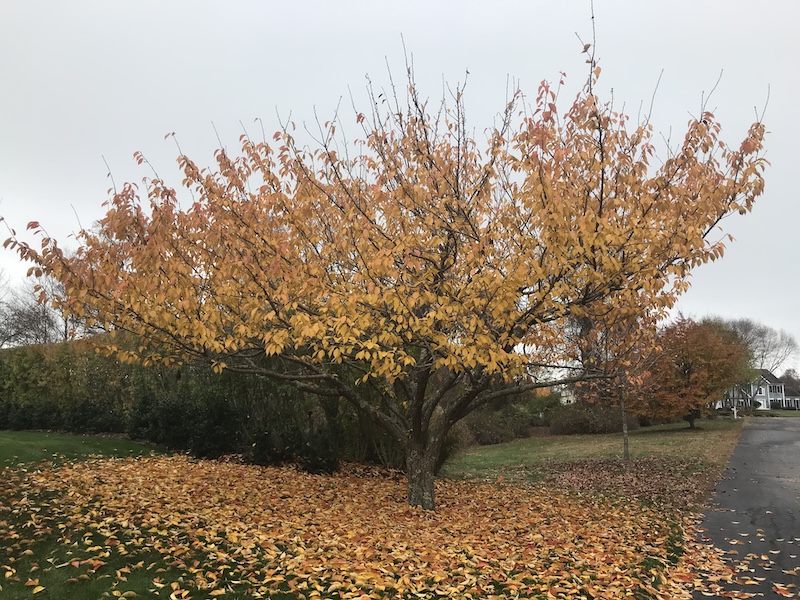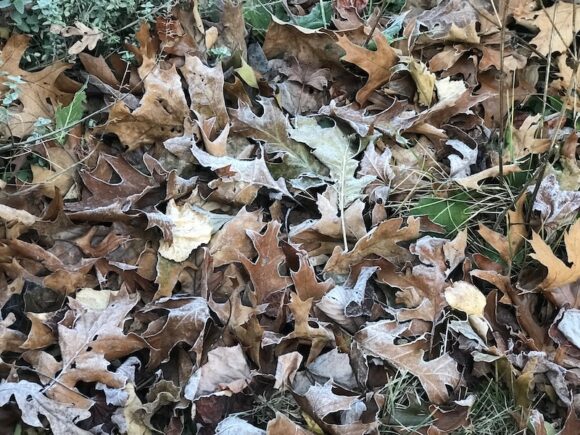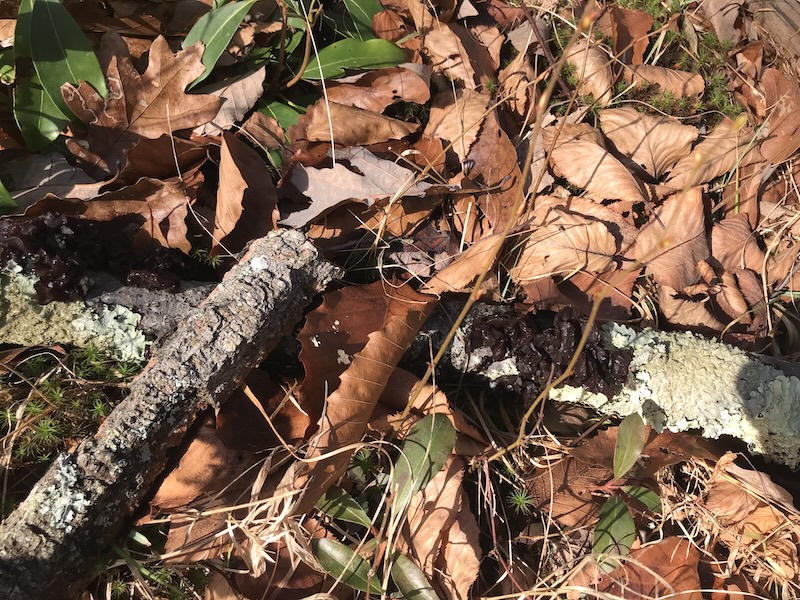
Ah, the sights, sounds and smells of fall … unfortunately, they often involve the racket and fuel fumes of motorized leaf blowers and visions of yard crews scalping lawns as part of our traditional New England fall yard cleanup.
But did you know that we should be doing less to our yards this time of year, letting nature do her thing and saving some money in the process?
For decades, the Xerces Society for Invertebrate Conservation has been explaining why we should let tree leaves fall where they may, or at least move them around gently with less energy and effort. See their Leave the Leaves campaign.

You see, dead leaves have a purpose in nature, more than just looking pretty for us two-legged leaf-peepers for a few weeks every fall. They are food and shelter for many beneficial insects (by definition, invertebrates) and other little critters (including frogs, salamanders and box turtles) that make up the outdoor ecosystem around us. And with the help of insects and wildlife, the leaves are broken down into nutrients and organic matter for our lawns, flowerbeds and landscapes. That is, if we leave them in place to do their good.
The Nature Conservancy points out that at least seven species depend on the leaves, as well as on the seed heads and stems of many of our favorite flowerbed plants. If we would only not strip these away in some fall frenzy to clear off our yards before colder weather hits. What we see as unnecessary brown stuff is actually natural insulation and nutrients.

So, this fall, instead of contributing to the incessant drone and damage of motorized leaf blowers, try taking a kinder and gentler approach to fall cleanup. Xerces Society recommends raking leaves into garden beds and under trees where they serve as natural mulch. Or, if you have an area in the yard that can accommodate a leaf pile over the winter, push the leaves over there. In the spring, you will have valuable leaf mold. Rewilding Magazine, a Canada-based publication, tells you how to make your own leaf mold.

Create small brush piles with the branches and twigs that you don’t want to leave in the middle of your yard; these also become home for insects and small wildlife. Put them at the far end of your property if you are worried about critters.
If you need to justify your actions to yourself, your spouse or neighbors (the ones with the scalped lawns), see National Wildlife Federation’s Six Excuses to Avoid Yard Work this Fall.
And, if you installed perennials, trees and shrubs this fall or earlier this year, don’t forget to give them a good watering. After a summer of enough rain, we are experiencing a dry fall.
For more good gardening advice, listen to garden writer Tom Christopher’s weekly Growing Greener podcasts and spend some time researching Pollinator Pathways. There are now Pollinator Pathway community programs in 19 states and Ontario, Canada.
Editor’s Note: The author, Suzanne Thompson, is a founding member of Pollinate Old Lyme, which kicked off in 2020 and is Old Lyme’s Pollinator Pathway project. For more information, visit the Pollinator Pathway website and/or Like/Follow the Pollinate Old Lyme Facebook page at this link.